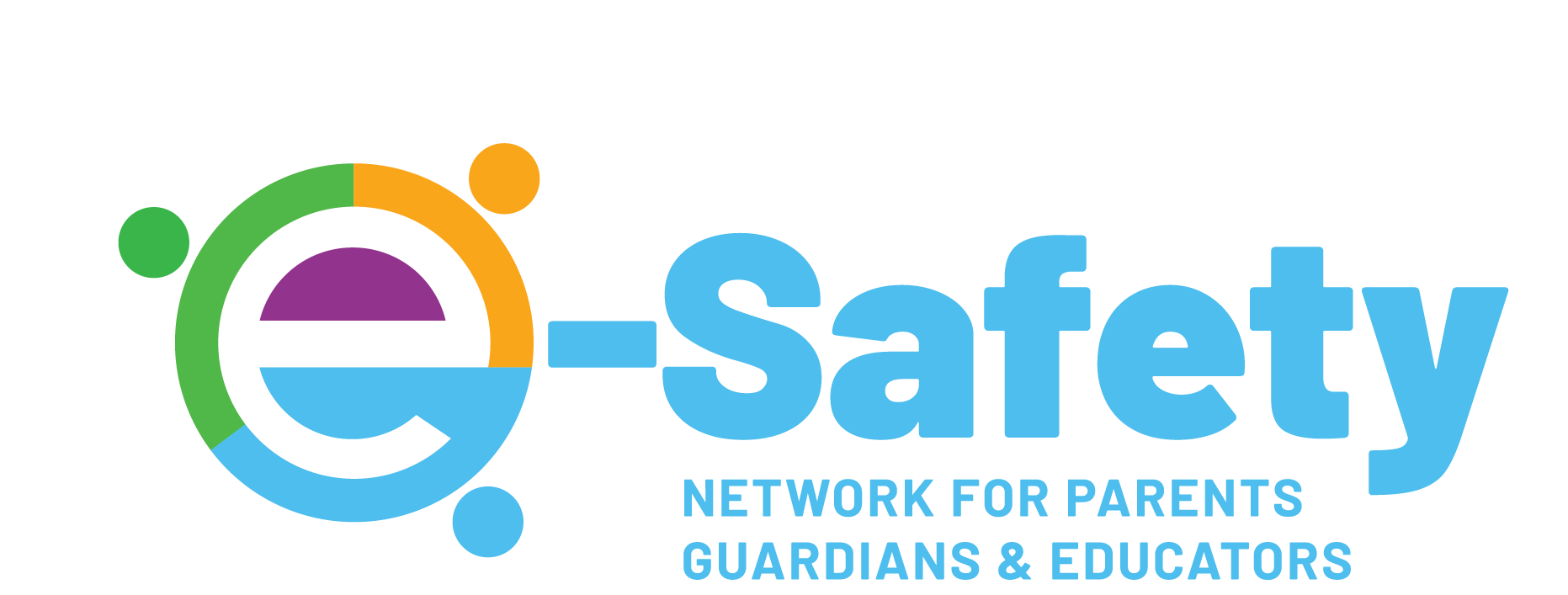Αρχική
Our Goal! (Introduction)
O στόχος μας!
Το έργο ERASMUS+ με τίτλο “eSafety-eCreativity Network for Teachers, Parents & Guardians” συγκεντρώνει μια κοινοπραξία αξιόλογων εταίρων που είναι αφοσιωμένοι στην προώθηση της εκπαίδευσης ενηλίκων και στην ενίσχυση της συνεργασίας σε διεθνή κλίμακα.
Το έργο απευθύνεται σε ενήλικες που ασχολούνται με την ανατροφή, την εκπαίδευση και την υποστήριξη των παιδιών και στοχεύει στην εκπαίδευσή τους σχετικά με τις προκλήσεις που αντιμετωπίζουν τα παιδιά στον ψηφιακό κόσμο και στην ενδυνάμωσή τους ώστε να γίνουν υπεύθυνοι ψηφιακοί πολίτες, επηρεάζοντας θετικά την ψηφιακή ετοιμότητα και την ασφάλεια της νέας γενιάς.
Εστιάζοντας στους θεματικούς τομείς της ασφάλειας από τον εθισμό στο Διαδίκτυο και του διαδικτυακού εκφοβισμού, το έργο στοχεύει:
- Στην καλλιέργεια των απαιτούμενων ψηφιακών ικανοτήτων των εκπαιδευτικών, των γονέων/κηδεμόνων και των συναφών επαγγελματιών, ώστε καταρχάς να αποτελέσουν θετικό πρότυπο για τα παιδιά αλλά και να είναι σε θέση να προωθήσουν και να υποστηρίξουν την ψηφιακή ετοιμότητα..
- Στην ενδυνάμωση των εκπαιδευτικών, γονέων/κηδεμόνων και συναφών επαγγελματιών μέσω παροχής κατάρτισης και συμβουλευτικής υποστήριξης σε θέματα που σχετίζονται με τους παραπάνω θεματικούς άξονες, με έμφαση στην εφαρμογή τεχνικών Ενσυναισθητικής Ενεργητικής Ακρόασης που θα τους βοηθήσουν να οικοδομήσουν μια σχέση εμπιστοσύνης, ενδιαφέροντος και σεβασμού με τα παιδιά.
Η δραστηριότητα της χρήσης του διαδικτύου για να βλάψει ή να φοβίσει ένα άλλο άτομο, κυρίως στέλνοντάς του δυσάρεστα μηνύματα:
- Τα σχολεία υποχρεούνται να βρουν τρόπους για την αντιμετώπιση του διαδικτυακού εκφοβισμού.
- Τα τελευταία δέκα χρόνια, ο διαδικτυακός εκφοβισμός έχει γίνει όλο και πιο συχνός μεταξύ των μαθητών/ μαθητριών.
Ο εθισμός στο διαδίκτυο χαρακτηρίζεται από υπερβολικές ή ανεπαρκώς ελεγχόμενες ανησυχίες, παρορμήσεις ή συμπεριφορές σχετικά με τη χρήση του υπολογιστή και την πρόσβαση στο διαδίκτυο που οδηγούν σε βλάβη ή δυσφορία.
Η κατάσταση έχει προσελκύσει αυξανόμενη προσοχή στα δημοφιλή μέσα ενημέρωσης και μεταξύ των ερευνητών, και αυτή η προσοχή έχει παραλληλιστεί με την αύξηση της χρήσης των υπολογιστών (και του Διαδικτύου).
Η Ασφάλεια στο Διαδίκτυο, επίσης γνωστή ως διαδικτυακή ασφάλεια, ασφάλεια στον κυβερνοχώρο και ηλεκτρονική ασφάλεια (e-safety), αναφέρεται στις πολιτικές, τις πρακτικές και τις διαδικασίες που μειώνουν τις βλάβες που προκαλούνται στους ανθρώπους από την (κακή) χρήση της τεχνολογίας των πληροφοριών.
- Καθώς ο αριθμός των χρηστών του Διαδικτύου συνεχίζει να αυξάνεται παγκοσμίως, τα δίκτυα, οι κυβερνήσεις και οι οργανισμοί έχουν εκφράσει ανησυχίες για την ασφάλεια των παιδιών, των εφήβων και των ηλικιωμένων που χρησιμοποιούν το Διαδίκτυο.
- Πάνω από το 45% έχουν ανακοινώσει ότι έχουν υποστεί κάποιου είδους διαδικτυακή παρενόχληση.
Project Motivation (Why):
Κίνητρα έργου (Γιατί)
Erasmus+ KA220-ADU – Συμπράξεις συνεργασίας στην εκπαίδευση ενηλίκων
Τίτλος Έργου: eSafety-eCreativity Network for Teachers, Parents & Guardians
H αυξημένη έκθεση των παιδιών στις ψηφιακές τεχνολογίες και τα ψηφιακά μέσα θέτει σημαντικές προκλήσεις στη σημερινή εποχή. Για την αποτελεσματική αντιμετώπισή τους κρίνεται καίρια η συνεργασία μεταξύ ατόμων που εμπλέκονται στην ανατροφή και την εκπαίδευσή των παιδιών.
Μια τέτοια συνεργασία όχι μόνο θα εξασφαλίσει μια ενιαία προσέγγιση στην αντιμετώπιση των προκλήσεων, αλλά θα επιτρέψει την ανταλλαγή γνώσεων και εμπειριών που θα συμβάλουν στην πληρότητα και την αποτελεσματικότητα της προσέγγισης του έργου.
Ωστόσο, για να μπορέσουν όλοι οι εμπλεκόμενοι στο «σύστημα υποστήριξης» των παιδιών να αντιμετωπίσουν αυτές τις προκλήσεις, θα πρέπει να είναι οι ίδιοι πλήρως ψηφιακά προετοιμασμένοι. Αυτό θα τους επιτρέψει όχι μόνο να καθοδηγήσουν αποτελεσματικά τα παιδιά στο ταξίδι τους στον ψηφιακό κόσμο, αλλά, το σημαντικότερο, να γίνουν πρότυπα για τα παιδιά με την υπεύθυνη ψηφιακή συμπεριφορά τους.
Το έργο eSafety-eCreativity Network for Teachers, Parents & Guardians κρίνεται σημαντικό ως προς την αντιμετώπιση των εξής:
- Ανάπτυξη της ψηφιακής ετοιμότητας και των ψηφιακών ικανοτήτων
Το έργο αποσκοπεί στη δημιουργία ενός ψηφιακά ικανού και καλά ενημερωμένου συστήματος υποστήριξης, για την ανάπτυξη ψηφιακών ικανοτήτων μεταξύ εκπαιδευτικών, γονέων/κηδεμόνων και συναφών επαγγελματιών για την προώθηση και υποστήριξη της ψηφιακής ετοιμότητας, με ιδιαίτερη έμφαση στον διαδικτυακό εκφοβισμό και τον ψηφιακό εθισμό, μέσω της δημιουργίας ευκαιριών μάθησης υψηλής ποιότητας και ψηφιακής συμβουλευτικής.
- Δημιουργία ενός ολιστικού δικτύου μάθησης και συνεργασίας
Tο έργο αποσκοπεί στη δημιουργία ενός ολιστικού δικτύου μάθησης και συνεργασίας στο πρότυπο ενός κοινωνικού δικτύου, το οποίο θα επιτρέπει την ανταλλαγή ιδεών, τεχνογνωσίας και εμπειρογνωμοσύνης μεταξύ γονέων/κηδεμόνων, εκπαιδευτικών και συναφών επαγγελματιών.
- Παροχή των κατάλληλων εκπαιδευτικών εργαλείων και παιδαγωγικών προσεγγίσεων
Στόχος του έργου είναι να εξοπλίσει τους γονείς/κηδεμόνες, τους εκπαιδευτικούς και τους συναφείς επαγγελματίες με δημιουργικά εκπαιδευτικά εργαλεία που θα τους επιτρέψουν να αντιμετωπίσουν τις προκλήσεις του διαδικτυακού εκφοβισμού και του ψηφιακού εθισμού με τα παιδιά, καθώς και με παιδαγωγικές τεχνικές που θα αναπτύξουν δεξιότητες επικοινωνίας μεταξύ γονέων/κηδεμόνων, εκπαιδευτικών και επαγγελματιών, καλλιεργώντας μια σχέση εμπιστοσύνης με τα παιδιά.
Μέχρι το 2025, ο μηνιαίος αριθμός των ενεργών χρηστών στα κοινωνικά δίκτυα αναμένεται να φτάσει τα 4,41 δισεκατομμύρια.
Σύμφωνα με τα τα στατιστικά στοιχεία των κοινωνικών δικτύων από το Statista, φαίνεται ότι μέχρι το 2025, ο μηνιαίος αριθμός των ενεργών χρηστών των κοινωνικών δικτύων αναμένεται να φτάσει τα 4,41 δισεκατομμύρια παγκοσμίως. Αυτό πρόκειται σε αντιστοιχία για το ένα τρίτο περίπου του συνολικού πληθυσμού του κόσμου. Είναι σημαντικό να αναφέρουμε ότι ο αριθμός των χρηστών των μέσων κοινωνικής δικτύωσης αυξάνεται σταδιακά και ραγδαία από το 2017.
Statista
Τα μέσα κοινωνικής δικτύωσης χρησιμοποιούνται σήμερα από το 58,5% του παγκόσμιου πληθυσμού.
Μια μελέτη της Smart Insights αποκάλυψε πρόσφατα ότι πάνω από το ήμισυ του παγκόσμιου πληθυσμού είναι ενεργό στα μέσα κοινωνικής δικτύωσης με τη μία ή την άλλη μορφή το 2022. Αυτό σημαίνει ότι περίπου 4,62 δισεκατομμύρια άνθρωποι χρησιμοποιούν σήμερα τα μέσα κοινωνικής δικτύωσης. Επίσης, ο μέσος όρος χρήσης ανά ημέρα ανέρχεται σε 2 ώρες και 27 λεπτά. Η μελέτη υποδηλώνει περαιτέρω ότι ο αριθμός αυτός αυξάνεται λόγω της πολυ-δικτύωσης. Από τα γεγονότα που έχουν αναδειχθεί στα μέσα κοινωνικής δικτύωσης, σχετικά με τον εθισμό, διαπιστώνεται ότι η αυξανόμενη υιοθέτηση αυτών των μέσων προκαλεί δραματικές εξάρσεις στη χρήση από ορισμένες ηλικιακές ομάδες, οι οποίες συχνά οδηγούν σε ανεξέλεγκτη ή υπερβολική χρήση των μέσων κοινωνικής δικτύωσης.
(Smart Insights)
Εκτιμάται ότι περισσότεροι από 200 εκατομμύρια άνθρωποι παγκοσμίως υποφέρουν από εθισμό στα μέσα κοινωνικής δικτύωσης και στο διαδίκτυο.
Η ανθρώπινη εξάρτηση από την τεχνολογία αυξάνεται μέρα με τη μέρα και αντανακλάται στον αυξανόμενο αριθμό λύσεων που έχουν σχεδιαστεί για να κάνουν τη ζωή πιο απλή και χωρίς προβλήματα. Είναι όμως η τεχνολογική πρόοδος ακίνδυνη; Η έρευνα για τον εθισμό στα μέσα κοινωνικής δικτύωσης αποκαλύπτει ότι περίπου 210 εκατομμύρια άνθρωποι παγκοσμίως υποφέρουν από κάποια μορφή εθισμού στο διαδίκτυο και τα μέσα κοινωνικής δικτύωσης. Μελέτες υποδεικνύουν ότι μελλοντικά η κατάσταση θα χειροτερέψει.
(Influencer Marketing Hub)
Στα μέσα κοινωνικής δικτύωσης κάποιοι έφηβοι περνούν περισσότερες από επτά ώρες κάθε μέρα συνδεδεμένοι.
Τα συμπτώματα της κατάθλιψης έχουν διπλάσια πιθανότητα να εμφανιστούν σε εφήβους που περνούν περισσότερες από 5 ώρες την ημέρα στα smartphones τους.
Τα στοιχεία για τον εθισμό στο διαδίκτυο και τα μέσα κοινωνικής δικτύωσης δείχνουν ότι οι έφηβοι που περνούν από πέντε έως επτά ώρες κάθε μέρα έχουν διπλάσιες πιθανότητες να υποφέρουν από συμπτώματα κατάθλιψης σε σύγκριση με τους συνομηλίκους τους που χρησιμοποιούν τα smartphones τους μόνο για μία ώρα την ημέρα. Αυτό δείχνει ότι οι συνέπειες της προσβασιμότητας στα μέσα κοινωνικής δικτύωσης και στην τεχνολογία μπορεί να είναι πιο σοβαρές από ό,τι αναμενόταν.
(NPR)
Τα στατιστικά στοιχεία για τα μέσα κοινωνικής δικτύωσης επιβεβαιώνουν ότι το 90% των ατόμων ηλικίας 18-29 ετών χρησιμοποιούν τα μέσα κοινωνικής δικτύωσης σε οποιαδήποτε διαθέσιμη μορφή.
Η χρήση των μέσων κοινωνικής δικτύωσης είναι πιο συχνή μεταξύ των νεότερων ενηλίκων. Σύμφωνα με την έκθεση της Statista, το 90% των ατόμων ηλικίας 18-29 ετών δηλώνουν ότι χρησιμοποιούν τα μέσα κοινωνικής δικτύωσης σε οποιαδήποτε διαθέσιμη μορφή, πράγμα που σημαίνει ότι διατρέχουν τον υψηλότερο κίνδυνο να εθιστουν στα μέσα κοινωνικής δικτύωσης. Τα άτομα ηλικίας 30-49 ετών έχουν μικρότερο ποσοστό 82%. Τα στατιστικά στοιχεία συνεχίζουν να μειώνονται όσο αυξάνεται η ηλικία των συμμετεχόντων, με τα άτομα ηλικίας 50-64 ετών να δηλώνουν χρήση σε ποσοστό 69% και την ηλικιακή ομάδα 65+ να φτάνει το 40%.
(Statista)
Scope of the Project (What):
Πεδίο εφαρμογής του έργου (Τι)
Εστιάζοντας στον θεματικό τομέα της Ψηφιακής Ασφάλειας, οι στόχοι αυτού του έργου είναι:
Δημιουργία πρωτότυπου διαδραστικού εκπαιδευτικού και επιμορφωτικού υλικού για να αξιοποιηθεί από γονείς/κηδεμόνες, εκπαιδευτικούς και σχετικούς επαγγελματίες, με έμφαση στην:
- Ανάπτυξη της Ψηφιακής Ετοιμότητας και των Ψηφιακών Ικανοτήτων των παιδιών ειδικά για δύο θεματικούς άξονες (εθισμός στο διαδίκτυο και διαδικτυακός εκφοβισμός): περιλαμβάνει τη δημιουργία δύο (2) τρισδιάστατων βίντεο κινουμένων σχεδίων, συνοδευόμενων από δύο (2) διαδραστικά εκπαιδευτικά βίντεο. Το υλικό θα αναπτυχθεί με τη δυνατότητα προσαρμογής και επέκτασης από την κοινότητα σύμφωνα με τις ανάγκες διαφορετικών ομάδων που συμμετέχουν στο έργο. Η κοινότητα θα έχει επίσης τη δυνατότητα να δημιουργήσει δραστηριότητες μάθησης με βάση το υλικό, είτε ψηφιακά είτε με φυσικό υλικό, τις οποίες θα μπορούν να μοιραστούν με άλλα μέλη, μέσω ενός συνεργατικού περιβάλλοντος
- Ανάπτυξη δεξιοτήτων συμβουλευτικής: με έμφαση στις τεχνικές ενσυναισθητικής ενεργητικής ακρόασης, που περιλαμβάνει τη δημιουργία ενός διαδραστικού εκπαιδευτικού οδηγού με υλικό που εμπίπτει στα ακόλουθα θέματα: α) θεωρητική ανασκόπηση του όρου ενσυναισθητική ενεργητική ακρόαση, β) παρουσίαση διαφόρων δραστηριοτήτων όπως: εστιασμένες συζητήσεις, σενάρια διδασκαλίας, ασκήσεις προσομοίωσης, παιχνίδια ρόλων, και γ) σύνδεση θεωρίας και πράξης.
Δημιουργία ενός διαδικτυακού περιβάλλοντος εξ αποστάσεως μάθησης (iLE) για γονείς, κηδεμόνες, εκπαιδευτικούς και επαγγελματίες.
- Το iLE συνδυάζει την ηλεκτρονική μάθηση με τα χαρακτηριστικά της δικτύωσης και των συνεργατικών πλατφορμών. Μέσω αυτού του περιβάλλοντος, τα μέλη της κοινότητας θα έχουν τη δυνατότητα να μοιράζονται ιδέες, τεχνογνωσία και προσαρμοσμένο υλικό, σε ένα ειδικό αποθετήριο που θα δημιουργηθεί στο πλαίσιο του iLE.
Σχεδιασμός και υλοποίηση ενός προγράμματος κατάρτισης για γονείς/κηδεμόνες, εκπαιδευτικούς και σχετικούς επαγγελματίες, προσφέροντας υψηλής ποιότητας, ευέλικτες ευκαιρίες μάθησης με βιωματικό τρόπο για ενήλικες, με έμφαση στην:
- Ανάπτυξη ψηφιακής ετοιμότητας & ψηφιακών ικανοτήτων ειδικά για τους δύο θεματικούς τομείς. Μέσω αυτής της κατάρτισης, θα αναπτύξουν δεξιότητες που θα τους επιτρέψουν να κατανοήσουν και να αντιμετωπίσουν καλύτερα θέματα ψηφιακής ετοιμότητας και να βοηθήσουν αποτελεσματικά τα παιδιά στην καλλιέργεια ψηφιακών δεξιοτήτων.
- Ανάπτυξη συμβουλευτικών δεξιοτήτων βασισμένων στις τεχνικές της ενσυναισθητικής ενεργητικής ακρόασης. Μέσω αυτής της κατάρτισης, θα αναπτύξουν δεξιότητες που θα τους επιτρέψουν να επικοινωνήσουν και να καλλιεργήσουν ψηφιακές δεξιότητες στα παιδιά. Ως εκ τούτου, θα ενισχυθεί ο γονεϊκός/εκπαιδευτικός/συμβουλευτικός τους ρόλος.
Ίδρυση Ψηφιακού Κέντρου Συμβουλευτικής, με επίκεντρο την Υποστήριξη της Ψηφιακής Ετοιμότητας και την καλλιέργεια Ψηφιακών Ικανοτήτων γονέων/κηδεμόνων, εκπαιδευτικών και επαγγελματιών (κοινωνικών λειτουργών και ειδικών συμβούλων).
- Σκοπός του Κέντρου Συμβουλευτικής είναι, μέσω των τεχνικών της ενεργητικής ακρόασης, να ενθαρρύνει τους συμμετέχοντες στην προώθηση της επικοινωνίας και της συζήτησης με τα παιδιά, σε σχέση με τους θεματικούς άξονες του προγράμματος.
Means of the Project (How)
Μέσα για την επίτευξη των στόχων του έργου (Πως)
Η ολιστική στρατηγική που υιοθετείται στο έργο δεν αφορά μόνο την εκπαίδευση των παιδιών στην ψηφιακή πολιτειότητα και τη δημιουργία προστατευτικών πλαισίων. Καθώς, αναγνωρίζεται η άμεση ανάγκη για τη δημιουργία ενός καλά ενημερωμένου συστήματος υποστήριξης που καθοδηγεί, υποστηρίζει και ενδυναμώνει τα παιδιά στις ψηφιακές τους αλληλεπιδράσεις, το έργο περιλαμβάνει εκτός από την παροχή εκπαιδευτικών εργαλείων για τα παιδιά, και την ενίσχυση της ψηφιακής ετοιμότητας και των συμβουλευτικών ικανοτήτων των ενηλίκων. Η ζωντανή, διαδραστική και ευέλικτη πλατφόρμα που αναπτύσσεται στο πλαίσιο του έργου ανταποκρίνεται σε διαφορετικές μαθησιακές προτιμήσεις, προσφέροντας ένα ευρύ φάσμα περιεχομένου από βίντεο κινουμένων σχεδίων για παιδιά έως οδηγούς και βίντεο εμπειρογνωμόνων για τους ενδιαφερομενους ενήλικες. Είτε μέσω ζωντανών εκπαιδευτικών συνεδριών με εμπειρογνώμονες, είτε μέσω της συμμετοχής σε μια κοινότητα μαζί με άλλους συμμετέχοντες, οι ενδιαφερόμενοι μπορούν να βρουν τον τρόπο μάθησης και συμμετοχής που προτιμούν και τους ταιριάζει καλύτερα.
Το έργο εγκαινιάζει μια διεπιστημονική προσέγγιση, διασυνδέοντας διάφορους ενδιαφερόμενους, όπως ιδρύματα, πανεπιστήμια, ενώσεις γονέων, εκπαιδευτικούς και επαγγελματίες. Συγκεντρώνοντας την τεχνογνωσία τους με τις βέλτιστες πρακτικές, το έργο δίνει ίση έμφαση στην καλλιέργεια τόσο των δεξιοτήτων που σχετίζονται με την ψηφιακή ετοιμότητα, καθώς και των ψυχολογικών και παιδαγωγικών δεξιοτήτων που είναι απαραίτητες για την αποτελεσματική υποστήριξη των παιδιών.
Επιπλέον, η προσέγγισή του έργου συνδυάζει τη μετάδοση της γνώσης των εμπειρογνωμόνων (top-down μοντέλο) σε συνδυασμό με τη δημιουργία μιας κοινότητας (bottom-up μοντέλο). Οι εμπειρογνωμονες συνεισφέρουν με ενημερωτικό περιεχόμενο, εκπαιδευτικό υλικό και συμβουλές, ενώ παράλληλα οι γονείς, οι εκπαιδευτικοί και οι επαγγελματίες ενθαρρύνονται να συνεισφέρουν ενεργά με τις δικές τους ιδέες, σχόλια και βέλτιστες πρακτικές. Καλλιεργώντας μια δυναμική κοινότητα καλά ενημερωμένων και ψηφιακά ικανών ατόμων, διασφαλίζουμε ότι η πλατφόρμα του έργου παραμένει μια συνεχώς εξελισσόμενη πηγή ενημέρωσης και εκπαίδευσης που παραμένει σχετική και επίκαιρη στο διαρκώς μεταβαλλόμενο ψηφιακό τοπίο.
Ελάτε να δημιουργήσουμε ένα ασφαλές περιβάλλον για τα παιδιά, ώστε να ενδυναμώσουν τις δεξιότητες τους τόσο online όσο και offline, εξερευνώντας το περιεχόμενο που έχουμε επιμεληθεί και συμμετέχοντας ενεργά στη συνεχιζόμενη συζήτηση εντός της κοινότητάς μας. Μαζί, ας διαμορφώσουμε ένα μέλλον όπου τα παιδιά θα μπορούν να περιηγούνται με αυτοπεποίθηση στον ψηφιακό κόσμο με την καθοδήγηση και την υποστήριξη που χρειάζονται.














 Romanian
Romanian Greek
Greek Hebrew
Hebrew Arabic
Arabic







